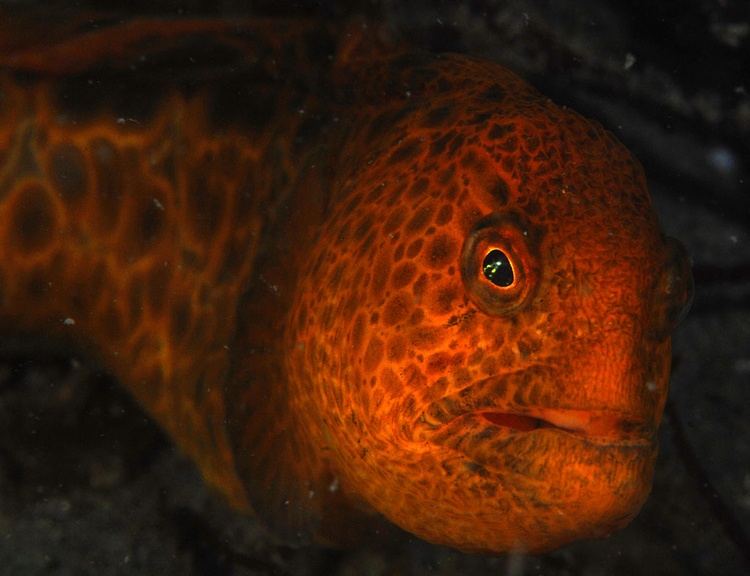

After about 4 months the eggs hatch and the baby Wolf eels float away on the current, called a pelagic phase, before eventually becoming mature enough to find a mate. This is a breeding pair who mate for life and cooperate to protect their eggs from predators such as Rock fish and Sculpin. Juveniles are orange and more conspicuously spotted this colouring fades as they mature. Many times divers will notice two Wolf eels in a den together. Sometimes Wolf eels and Giant pacific octopus will compete for the best den spaces as they both look for the same den characteristics. This is why looking for midden is a good way to locate a nearby den.

Wolf eels feed on invertebrates such as mussels, clams, and crabs. They can grow to 8 feet in length and over 40 pounds.
#Juvenile wolf eel skin
As they mature, their skin changes to a dark orange / rust color with a more. Wolf eels aren’t true eels, but are related to Atlantic wolffish instead. Its brilliant orange color an indication of its young age, a juvenile wolf-eel peers from inside its temporary home in an old pipe in Northern Puget Sound. Wolf eels begin their lives with smooth skin shaded yellow / orange / brown with giraffe-like patterns down their side. This is a common misnomer given its long, slender body and misleading common name. In contrast, the juvenile wolf-eel is remarkably colorful, with spots and stripes of orange and yellow. After descending and getting settled into the dive, our dive leaders always check around for cracks, crevasses, and midden piles (a mound of shells and broken up bits of crab) that might indicate the presence Wolf eel (Anarrhichthys ocellatus). Adult wolf-eels have a grey mottled body with darker eye-spots on their back and dorsal fin.


 0 kommentar(er)
0 kommentar(er)
